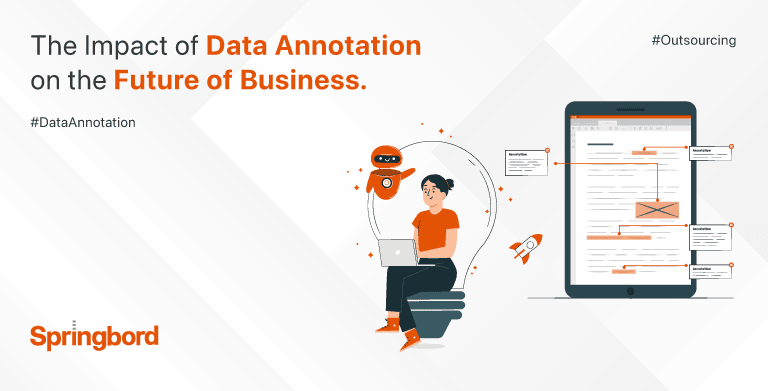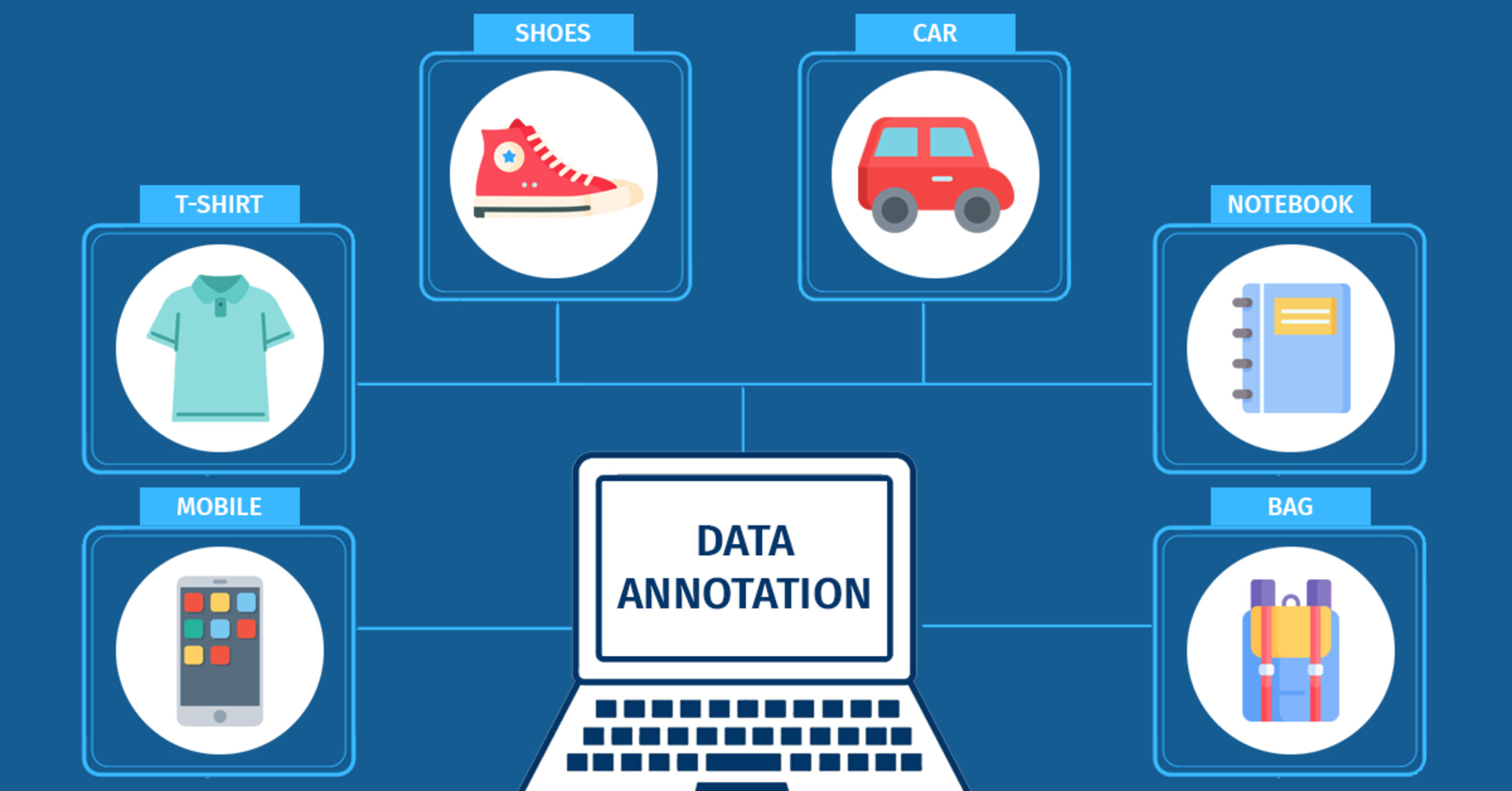The Rise of Data Annotation: A Vital Force in the Digital Age
Related Articles: The Rise of Data Annotation: A Vital Force in the Digital Age
Introduction
In this auspicious occasion, we are delighted to delve into the intriguing topic related to The Rise of Data Annotation: A Vital Force in the Digital Age. Let’s weave interesting information and offer fresh perspectives to the readers.
Table of Content
The Rise of Data Annotation: A Vital Force in the Digital Age

The digital landscape is expanding at an unprecedented rate, fueled by the constant generation of data. From social media posts to medical images, from financial transactions to self-driving cars, data is the lifeblood of our modern world. But raw data, in its unprocessed form, is essentially useless. It requires careful structuring, labeling, and organization to unlock its potential. This is where data annotation comes in, emerging as a vital force in the digital age.
Understanding Data Annotation: The Foundation of Intelligent Systems
Data annotation is the process of labeling and categorizing data, transforming it from raw information into structured, usable insights. It involves tagging, classifying, and annotating various types of data, including:
- Images: Identifying objects, people, scenes, and emotions in images.
- Text: Labeling entities, sentiments, and relationships within text.
- Audio: Transcribing speech, identifying speakers, and labeling audio events.
- Video: Tracking objects, identifying actions, and annotating scenes in videos.
This process is akin to providing context and meaning to raw data, allowing machines to understand and interpret it. Imagine a machine learning model tasked with identifying different types of fruits in an image. Without annotated data, the model would be unable to distinguish an apple from a banana. Data annotation provides the necessary training data, enabling the model to learn the characteristics of each fruit and make accurate predictions.
The Importance of Data Annotation: Fueling the Growth of Artificial Intelligence
Data annotation plays a pivotal role in the development and advancement of artificial intelligence (AI). It acts as the foundation upon which AI models are built, providing the necessary training data for them to learn and improve. The quality and accuracy of annotated data directly impact the performance of AI systems, making it a critical factor in their success.
Here’s how data annotation drives AI progress:
- Machine Learning: Annotated data provides the training examples that machine learning algorithms require to learn patterns and make predictions.
- Computer Vision: Image annotation enables machines to "see" and interpret visual information, leading to applications like object recognition, facial recognition, and medical image analysis.
- Natural Language Processing (NLP): Text annotation allows machines to understand and process human language, enabling applications like chatbots, language translation, and sentiment analysis.
- Speech Recognition: Audio annotation enables machines to understand spoken language, powering applications like voice assistants, transcription services, and speech-to-text software.
The Benefits of Data Annotation: Transforming Industries and Empowering Businesses
Data annotation is not just a technical process; it’s a catalyst for innovation and growth across various industries. Here are some key benefits:
- Enhanced Efficiency and Productivity: By automating tasks and processes, data annotation can significantly improve efficiency and productivity, freeing up human resources for more strategic work.
- Improved Accuracy and Insights: High-quality annotated data leads to more accurate and reliable AI models, enabling better decision-making and insights.
- Personalized Experiences: Data annotation enables businesses to personalize user experiences by tailoring products and services based on individual preferences and behaviors.
- New Product and Service Development: Annotated data fuels the development of innovative products and services that leverage AI capabilities, opening up new markets and opportunities.
Exploring the Landscape of Data Annotation Jobs: A Growing Field with Diverse Opportunities
Data annotation has emerged as a thriving field, offering a wide range of job opportunities for individuals with diverse skillsets. Here are some popular roles in data annotation:
- Data Annotator: This role involves labeling and categorizing data, often using specialized software tools. It requires strong attention to detail, accuracy, and the ability to follow specific guidelines.
- Data Analyst: This role involves analyzing and interpreting annotated data, identifying trends, and generating insights. It requires analytical skills, data visualization abilities, and knowledge of statistical methods.
- Project Manager: This role involves overseeing data annotation projects, managing teams, and ensuring timely delivery of high-quality data. It requires strong communication, organizational, and leadership skills.
- Quality Assurance (QA) Specialist: This role involves ensuring the accuracy and quality of annotated data, performing quality checks, and identifying any errors or inconsistencies. It requires a keen eye for detail, a strong understanding of data annotation principles, and the ability to communicate effectively with annotators.
FAQs on Data Annotation Jobs:
Q: What qualifications are required for data annotation jobs?
A: While formal qualifications can be beneficial, many data annotation jobs are accessible to individuals with a high school diploma or equivalent. Key skills include attention to detail, accuracy, the ability to follow instructions, and basic computer literacy.
Q: Is data annotation a remote job?
A: Yes, data annotation is often performed remotely, making it a flexible and accessible career option. Many companies offer remote work opportunities, allowing individuals to work from anywhere with an internet connection.
Q: What are the salary expectations for data annotation jobs?
A: Salaries for data annotation jobs vary depending on experience, location, and the specific role. Entry-level positions typically offer competitive hourly rates, while experienced professionals can earn higher salaries.
Q: What are the career growth opportunities in data annotation?
A: Data annotation offers a path for career growth. Individuals can progress to roles like data analyst, project manager, or quality assurance specialist. They can also specialize in specific data types, such as image annotation or text annotation, becoming experts in their chosen field.
Tips for Success in Data Annotation Jobs:
- Develop Strong Attention to Detail: Accuracy is paramount in data annotation. Pay close attention to instructions and ensure the data is labeled correctly.
- Improve Computer Skills: Familiarity with computer software and tools used for data annotation is essential. Enhance your skills in data annotation platforms and software.
- Stay Updated on Industry Trends: The field of AI and data annotation is constantly evolving. Keep abreast of the latest trends, technologies, and best practices.
- Build a Portfolio: Showcase your skills and experience by creating a portfolio of annotated data samples. This can help you stand out to potential employers.
- Network with Professionals: Connect with other data annotation professionals through online communities, industry events, and conferences. Networking can provide valuable insights, job opportunities, and professional development opportunities.
Conclusion: The Future of Data Annotation – A Vital Engine for Progress
Data annotation is not just a job; it’s a vital force shaping the future of technology and innovation. As AI continues to evolve and permeate various industries, the demand for accurate and high-quality annotated data will only grow. Individuals with the skills and dedication to contribute to this field can play a crucial role in advancing the progress of AI and shaping the digital landscape of tomorrow. The future of data annotation is bright, promising exciting opportunities for those who embrace the challenge of transforming raw data into meaningful insights.








Closure
Thus, we hope this article has provided valuable insights into The Rise of Data Annotation: A Vital Force in the Digital Age. We thank you for taking the time to read this article. See you in our next article!